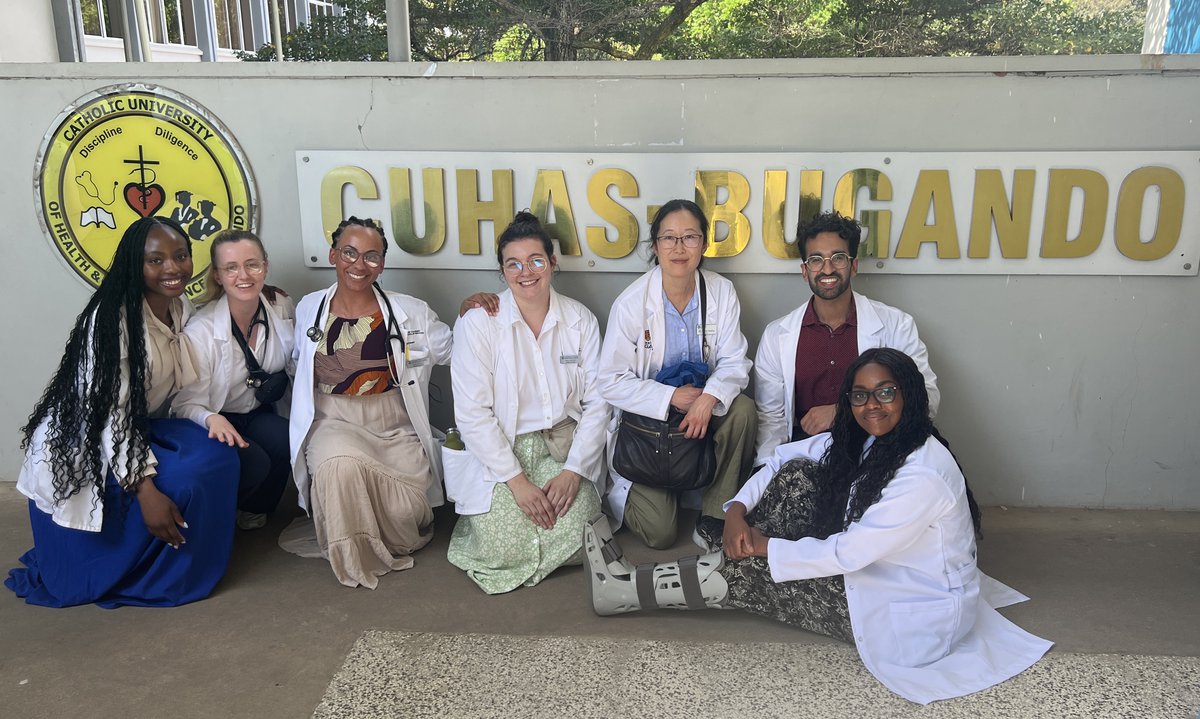It’s mid-morning when our plane touches down in Mwanza, Tanzania. It’s been almost 10 years since my last visit, and it seems like little has changed. The airport still sits in a sun-baked field on the edge of Lake Victoria, Africa’s largest lake. Even my friend and driver Emmanuel Bushishi, who emerges smiling and waving, from a crowd of taxi drivers outside, looks the same.
Last year, the University of Calgary Cumming School of Medicine (CSM) renewed its memorandum of understanding with Mwanza’s Catholic University of Health and Allied Sciences (CUHAS). Over the past 18 years, the two institutions have partnered in research, educational initiatives and community-based outreach programs. This is the first time since before the pandemic that my co-preceptor Dr. Amy Gausvik and I have brought medical students here for a four-week elective rotation. And it’s my third time in Mwanza, having preceptored medical students in 2014 and 2015.
As we make our way into town, Emmanuel helps me notice that not everything is exactly the same. There used to be only one stoplight in the entire city, and now we pass many. We drive by the flashy Rock City Mall, which was being built when I was here last. And I can tell that there are more people, more cars, more boda-bodas (motorcycle taxis) everywhere. A quick Google search tells me that the population has almost doubled over the last decade.
I see changes at the hospital, too. They have an electronic medical record instead of handwritten chart notes, and you can order CT scans and MRIs when previously it was difficult at times to get X-rays or basic blood work.

Our students rotate through general surgery, pediatrics, obstetrics and gynecology, and internal medicine. Each day starts with breakfast at the hospital canteen, usually sweet tea and vitumbua (fried rice cakes) or chapati. We attend morning report, where the team on call overnight presents some of their admissions. This is followed by rounds with the team and then either surgeries or work on the wards. A few times each week, our students attend Swahili language and cultural classes.
The faculty and students from each department go out of their way to welcome us and treat us with kindness, patience and enthusiasm. They invite us to participate in their teaching sessions, and the students are invited to social events as well. On the wards, the residents and interns take the time to teach our students procedural skills, to help them become familiar with conditions such as malnutrition, tuberculosis and schistosomiasis, and even translate from Swahili to English for us.
One of the highlights of this year’s trip was the afternoon we spent with the Tanzanian medical students during a study session on rheumatic heart disease. I was blown away by their knowledge, their dedication and their passion for medicine. Their genuine enthusiasm rekindled my own curiosity and love of medicine, which I have to say had been somewhat dampened by the pandemic and government cuts to family medicine.
It was also a pleasure for me to watch our students learn, grow and thrive. One student even told us that the elective was the best experience they’d had in medical school so far. I give them all credit for being willing to be pushed out of their comfort zones and to be exposed to unfamiliar situations and perspectives. It’s worth mentioning that the personal financial cost of these electives is not insignificant. Some bursary support has been available to help make international electives accessible to all of our students, though there is now less support available for future cohorts.
I saw our students face challenges and overcome them, and I learned as much from them as I hope I was able to impart. I feel like I came home from the elective able to look on my own work with fresh eyes.
Our elective was designed with an anti-colonial lens and co-developed with CUHAS’s Undergraduate Medical Education Office. It was important to our global health office and to me personally that we reflect on the impact of our presence and focus on giving more than we received. Even now that I am home, I continue to think about how to honour the spirit of reciprocity that underpins the partnership between CUHAS and CSM.
Back in 2018, we were able to host a true student exchange, bringing medical students from Tanzania to Calgary for an elective after we had visited Tanzania. Unfortunately, in recent years, visa and other logistical issues have made this challenging. However, CSM remains committed to providing specialty and subspecialty clinical opportunities for faculty, scholars and leaders from our partner institutions.
A visit from several of the CUHAS scholars and research clinicians is currently in the works. I look forward to welcoming my colleagues from CUHAS in the near future with the same warmth that we were shown and to many more trips to Tanzania.
Acknowledgments: My thanks to Dr. Jenn Brenner, Dr. Haruna Dika, Dr. Amy Gausvik, and Professor Jeremiah Seni for their support writing this article and throughout our elective experience.
Banner image: (L to R): Akaya Blair, Mowa Adeleye, Chanda Mwansa, Dr. Haruna Dika (Dean, Weill Bugando School of Medicine), Professor Jeremiah Seni (Director of Postgraduate Studies, CUHAS), Dr. Liana Hwang, Keira Britto, Taylor Pigott, Chaten Jessel.
